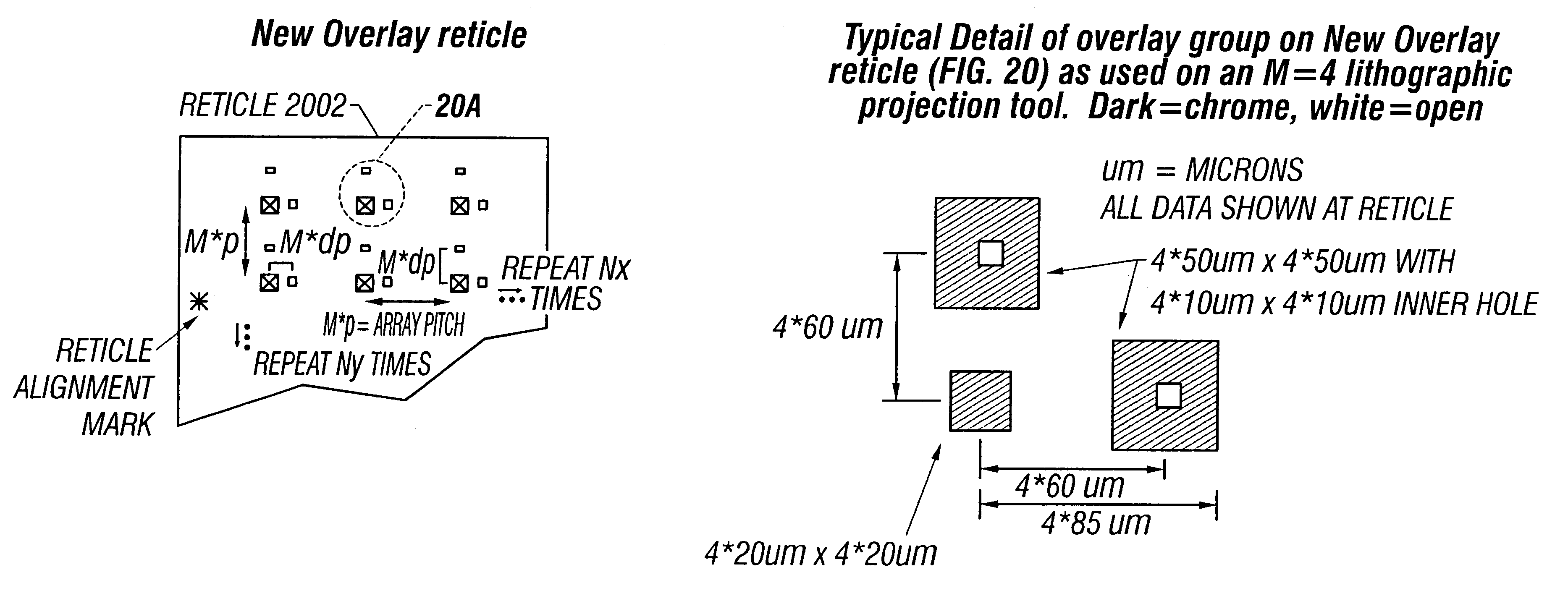Method and apparatus for self-referenced projection lens distortion mapping
a projection lens and distortion mapping technology, applied in the field of optical metrology, can solve the problems of machine to machine wafer stage differences, the feature size of the device is dwindling, and the performance of the photolithographic system is pushed to the limit,
- Summary
- Abstract
- Description
- Claims
- Application Information
AI Technical Summary
Problems solved by technology
Method used
Image
Examples
second main embodiment
Yet another embodiment allows for the extraction of lens distortion placement error excluding total translation, rotation, and overall scale or magnification overlay error and is mathematically decoupled from stage error. FIG. 15 illustrates this embodiment in terms of a process flow diagram. First in block 1502, a wafer is provided. Typically it already has alignment marks suitable for use at normal orientation (0 degrees) and when rotated by 90-degrees as shown in FIG. 22. In cases where the projection imaging tool, or machine, is capable of realigning an unpatterned wafer after a 90-degree rotation to 120%*max(Lx, Ly), where the exposure field has rectangular dimension Lx.times.Ly. Each full-field exposure produces an Mx.times.My array (Mx<=Nx, My<=Ny) of overlay groups at the wafer surface shown by the solid line overlay groups of FIGS. 11, 12, 25.
Using the same reticle the wafer stage is blind stepped to expose the second layer of the X-shear pattern with field center located a...
PUM
| Property | Measurement | Unit |
|---|---|---|
| rotation | aaaaa | aaaaa |
| distance | aaaaa | aaaaa |
| semiconductor | aaaaa | aaaaa |
Abstract
Description
Claims
Application Information
 Login to View More
Login to View More - R&D
- Intellectual Property
- Life Sciences
- Materials
- Tech Scout
- Unparalleled Data Quality
- Higher Quality Content
- 60% Fewer Hallucinations
Browse by: Latest US Patents, China's latest patents, Technical Efficacy Thesaurus, Application Domain, Technology Topic, Popular Technical Reports.
© 2025 PatSnap. All rights reserved.Legal|Privacy policy|Modern Slavery Act Transparency Statement|Sitemap|About US| Contact US: help@patsnap.com



